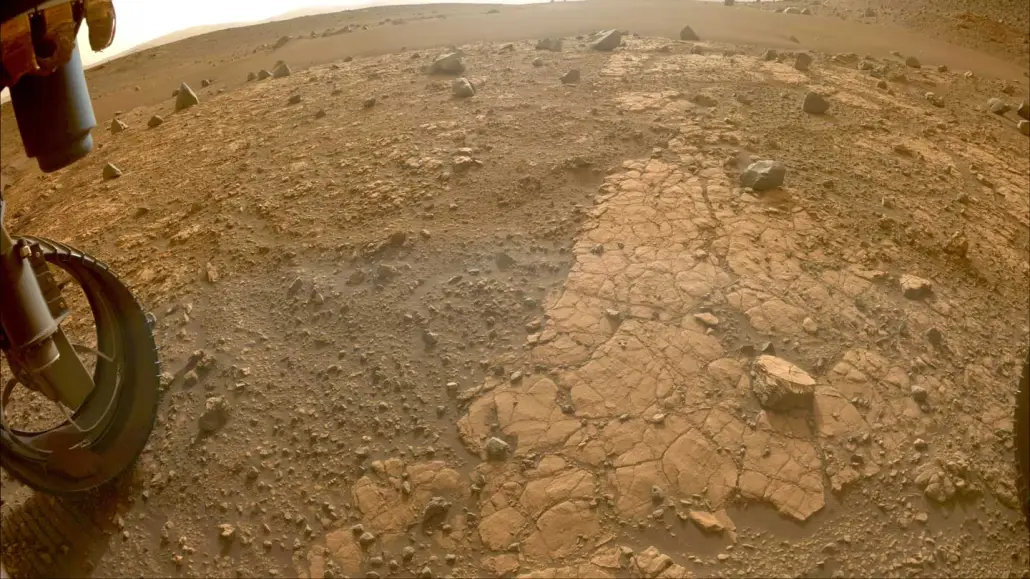NASA’s Perseverance rover captured the sound of a dust devil on Mars
The first-of-its-kind recording was around a 1-in-200 shot

NASA’s Perseverance rover (whose wheel is seen at left) is seen here exploring Mars’ dusty Jezero crater on November 5. In September 2021, the rover made the first-ever audio recording of a Martian dust devil as it swept over the robotic explorer.
JPL-Caltech/NASA







